Many people believe betting on Greyhound dog races is a bit of harmless fun. After all, sleek Greyhounds reach up to 45 mph while chasing rabbits in a circle.
The truth is, it isn’t fun for the thousands of dogs killed. Some get killed because they aren’t fast enough. Many Greyhounds suffer injuries, broken legs, or lose their competitive edge, or never had it in the first place.
Dog racing on active tracks is in decline. Thanks to the efforts of advocates who fight diligently to stop Greyhound racing.
However, this sport has many betting fans in the USA. The tracks are open without any concern for animal welfare in the Greyhound industry.
Why Greyhound Dog Racing Is Cruel and Inhumane
Greyhound racing is inhumane on many levels. We’ll look at many facets of why dog racing is cruel. It is not just about serious injuries, animal cruelty, and how dogs die.
Greyhound Kennels
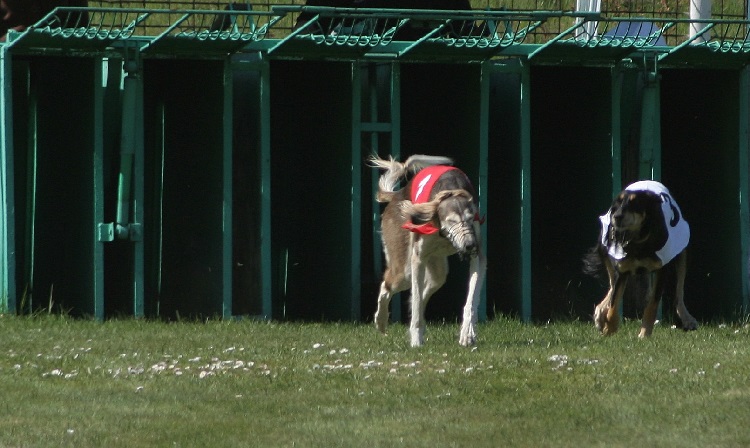
Greyhounds born into the dog racing industry don’t lead a life of luxury. Owners house them in compounds that resemble shacks. Typically, these kennels are cheaply built narrow barns with dog runs. Prison is a better word to describe these warehouses.
Owners stack these dogs in kennels or line them up in rows. Dogs only go outside for a short run to relieve themselves in a muddy, wet pen.
Most racing dogs spend 20 to 23 hours in barbaric track cages that measure 36 X 36 X 42 inches. This is barely enough room for Greyhounds to stand. Average Greyhounds stand to 30 inches at the shoulder.
Of course, it’s in the Greyhound owners’ best interest to feed their dogs. Otherwise, they’d end up with lethargic dogs. We’ll explain what food trainers provide these dogs. It’s not what you think nutritious dog food should be.
Racing Is Dangerous: Greyhounds Are Raced to Death
Although racing dogs are supreme athletes, they don’t get treated like one. Dog racing is dangerous. Many Greyhounds forced into racing suffer grievous injuries.
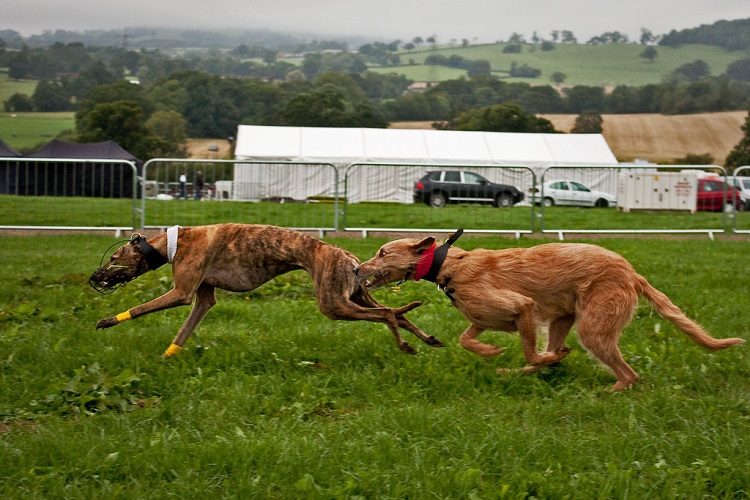
These staggering numbers should make the bile rise in every person. We also can’t blame these numbers on third-world countries. They belong to prosperous countries like the USA, Australia, New Zealand, and Ireland.
- Australia kills over 17,000 Greyhounds annually
- Ireland murders 38 Greyhounds per month and as many as 6000 from overbreeding
- Mass graves of Greyhounds exist worldwide
- One man reportedly killed over 10,000 dogs in 15 years
- Most dogs are denied veterinary care
Racing dogs don’t just die on the track or for their poor performance. Tens of thousands of them die needlessly because of the Greyhound racing industry. Did you know a loved and healthy Greyhound can live for 12 to 14 years without ever chasing rabbits?
Greyhounds Suffer Catastrophic Injuries While Racing
Watching a dog run at 45 mph is a thrilling experience. Cheetahs, the fastest animal on earth, reach bursts of 65 to 75 mph to catch prey. They average 40 mph, making them slower than Greyhounds earning money. One would think that owners would treat these dogs like champions. Instead, Greyhounds routinely die.
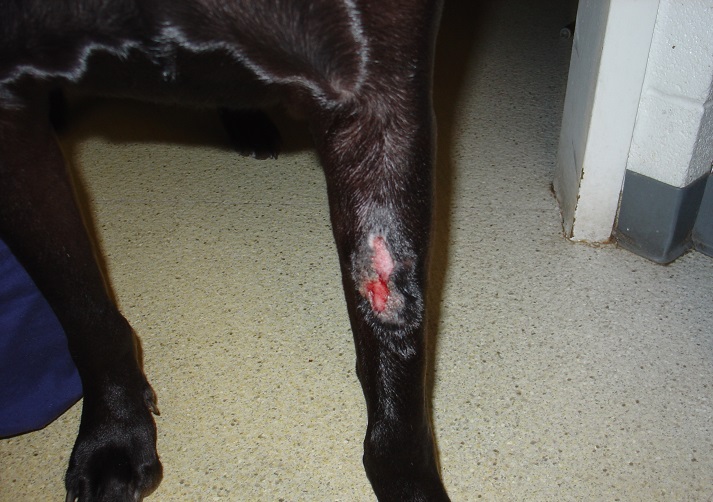
Racing Causes:
- Life-ending broken bones
- Seizures
- Paralysis
- Broken backs
- Head trauma
- Crushed skulls
- Underperforming dogs
- Other injuries
- Broken necks
Finally, many more get euthanized by electrocution. Getting accurate stats is difficult because few race dog owners make official reports. However, in an eight-year span, over 14,000 Greyhounds sustained injuries.
The HSUS suggests between 2008 and 2018, 15,273 race dogs suffered routinely documented injuries. The most common injury is broken legs.
In West Virginia, at two separate tracks, in the same ten-year span, 8159 dog injuries occurred. At least 398 dogs died in West Virginia or were euthanized.
In Arkansas, 1148 suffered injuries within the same period, and 35 dogs died. In Iowa, 417 Greyhounds got hurt, and 29 died.
Since most countries like Ireland, the USA, Australia, and Mexico don’t have to report, these numbers are low estimates. In that same eight-year period, over 1000 race dogs died from injuries or were euthanized because of their injuries.
Most Greyhounds have short racing careers. They average 18 months to 5 years on the circuit before they’re retired. Many lose their lives to injuries. Others are forced into retirement because they’re losing money on racetracks. Others are sent back to barracks for breeding.
Since dog owners can navigate so many loopholes, it’s difficult to gauge the extent of injuries and deaths from Greyhound racing.
Racing Commissions that should be monitoring and enforcing the few existing regulations willingly turn a blind eye. Though since 2008, 2200 offenders have faced disciplinary rulings. Perhaps this is for show.
A handful of fortunate canine souls get sent to rescue homes where they receive rest and pampering.
Greyhounds Are Overbred
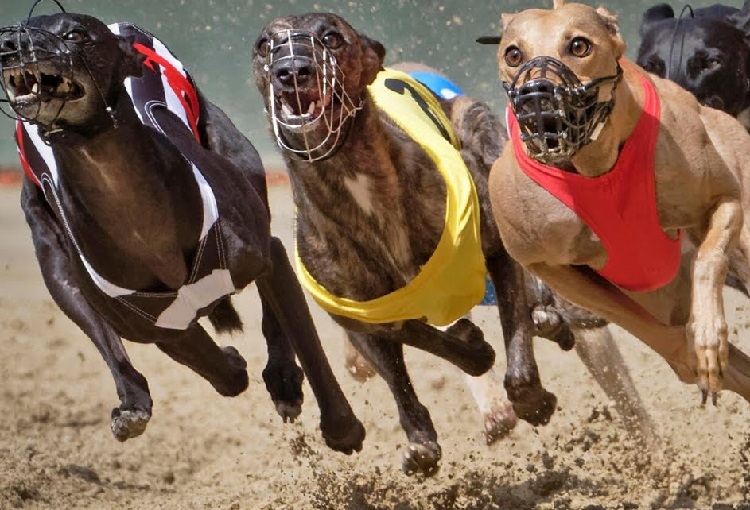
Every year, 8000 new litters enter the gaming world in the USA, Australia, and Ireland. This means that 48,000 puppies enter the system. Not all have the racing gene. Many of these puppies end up in destinations with no animal protection laws.
Greyhound racing owners only care about breeding the fastest dog. It goes without saying that many of these puppies end up dead. According to the ASPCA, over 80,000 Greyhounds pups are part of the racing industry and unscrupulous breeding methods.
Greyhounds Live in Extreme Confinement
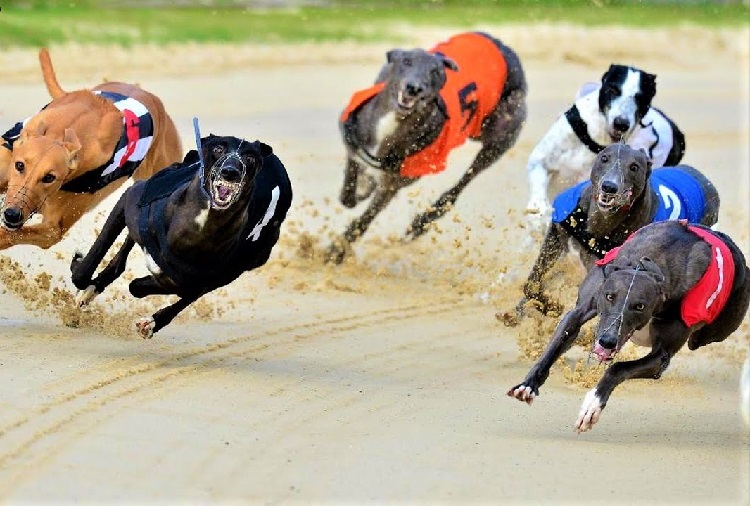
Animal cruelty laws exist to protect pets, domesticated animals, and endangered species. That doesn’t change why people abuse animals. It’s inconceivable how low some individuals go to harm animals for profit, and dogs suffer.
Racing Greyhounds perform in a sport that cares about one thing–winning bets. Once the winning dog pays off, some owners send them to the worst animal facilities in underdeveloped countries where Greyhounds die.
Racing dog breeders abuse their dogs in many ways. Kenneling them in stacked wire pens and warehouse-style kennels is the accepted norm. Dogs suffer in these warehouse-style kennels without any human kindness while healing from Greyhound injuries.
Greyhounds only see daylight for a few outings each day to relieve themselves and when forced to perform on the track. All Greyhound racing owners must provide a standard-sized cage measuring 36 X 36 X 42 inches.
Greyhound warehouse-style kennels are probably on par for cruelty, with puppy mills for low standards. Perhaps they wrote the handbook on how to abuse dogs and make money while doing so.
Greyhounds Are Doped and Drug Addicted
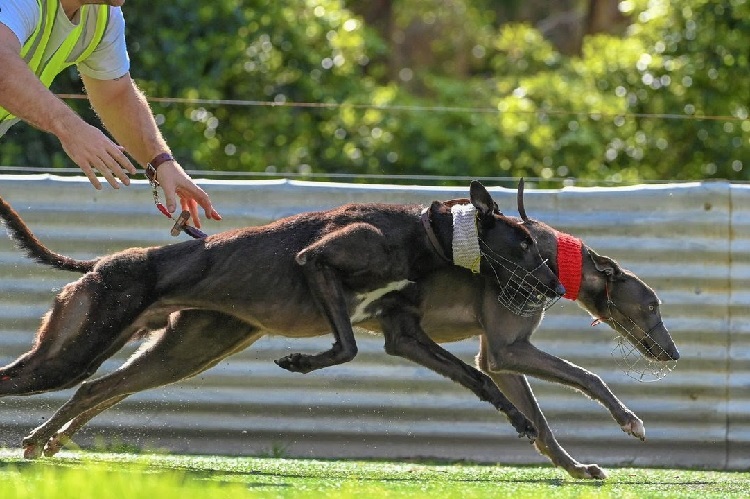
Greyhound racing dog owners aren’t satisfied until they’ve exploited every avenue of dog abuse. Although dog racing is banned in many states, it’s a money maker.
To make dogs run faster, Florida tracks documented over 438 positive drug test results, including 73 incidents with cocaine. Many illegal drugs surface in other countries like Great Britain and Australia.
These ‘upstanding’ dog owners claim that cocaine contamination is from environmental influences. However, they have no qualms about drugging their race champions with novocaine, lidocaine, DMSO, opiates, and serious drugs like amphetamines and morphine that don’t belong in a dog’s bloodstream.
Further, the Florida Greyhound Association believes that owners routinely inject anabolic steroids into 50% of racing female greyhounds. These steroids have long-term side effects and are harmful to Greyhounds. Incidents of aggression and virilization (females develop male hormones) are recorded.
Futile attempts to ban injection steroids by well-meaning regulations in Australia, England, and New Zealand go up against people who break the law daily.
Greyhound Racing Is Full of Corruption and Gambling
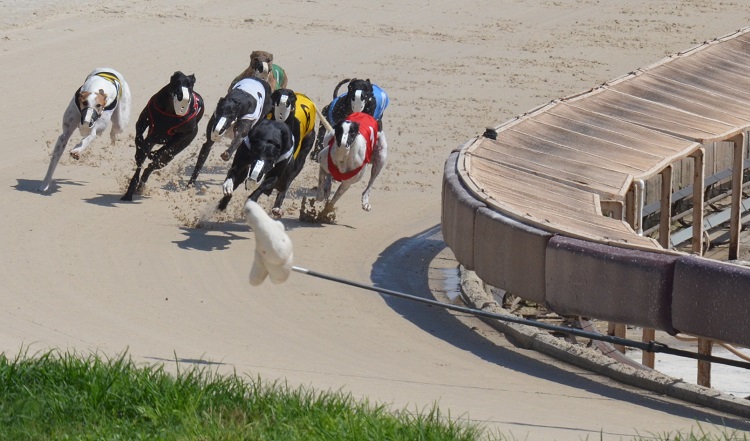
No surprise, Greyhound racing is full of corruption. It’s also unethical, immoral, inhumane, and challenging to find an honest person. Though Greyhound racing falls under the Racing Commission umbrella, inside sources suggest that the dog racing industry is beyond unethical.
Few complaints receive valid attention. Dishonesty and corruption are staples of the dog racing and Greyhound breeding industry.
Sports betting is legal in many states. However, dog racing is officially illegal in 41 states. Also, many people know how to circumvent laws to their benefit. The health and life of a dog don’t fit into the equation. West Virginia still advertises Greyhound dog tracks.
Alabama, Arkansas, Texas, Iowa, and Texas support dog racing as a legal activity and have active dog race track facilities. Connecticut, Kansas, Oregon, and Wisconsin also allow dog racing, but no operational facilities exist. The Iowa Greyhound Park has closed to live racing and simulcasting.
Many states that don’t support active dog racing parks still allow their residents to make online sports bets in neighboring states. Through Greyhound advocacy pressure, many dog racing parks are closing. It’s become a dying industry
How Does the American Public Feel about Greyhound Racing?
Public awareness campaigns are forcing Greyhound racing into decline. Other easier ways of sports betting are taking the brunt off these poor dogs. The people have spoken.
The residents of Florida voted to end dog racing, with a staggering majority of 70% in 2018. Arizona ended dog racing in 2017.
Other states acted earlier, with Massachusetts, Rhode Island, and New Hampshire leading in 2010. South Dakota got on the bandwagon in 2011, and Colorado signed on the dotted line in 2014.
Are There Other Welfare Concerns with Greyhound Racing?
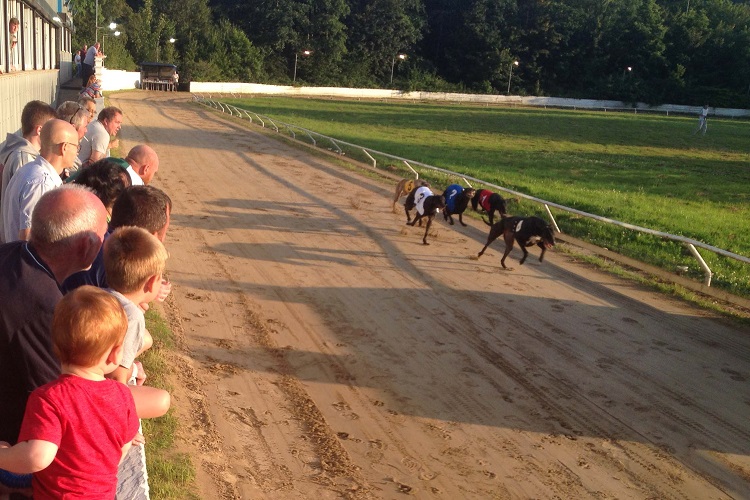
The list is endless. Greyhound racing puts dogs at risk. Six active dog tracks in legal states and as well as defunct states received cruelty fines. It’s not surprising what the documented cases reported.
- Physical abuse
- Improper diet or starvation
- Untreated parasitic infestation
- Owners failing to provide access to medical care
Other welfare concerns include the improper diet of racing Greyhounds. Most owners use 4-D meat to feed their dogs. This meat source comes from sources of the dead, dying, diseased and disabled animals, aka 4-D. To meet regulations, all these owners have to add is denatured charcoal.
While 4-D meat is cheap, it costs dogs good health. This meat contains traces of salmonella, E-coli, and other pathogens. Since Greyhound trainers believe raw meat increases a dog’s speed, there’s little hope of it getting cooked to kill harmful substances.
This welfare concern also spreads to humans who may come in contact with those pathogens.
Disease transmission is also a concern in the racing industry. Because hundreds of dogs come into contact with each other or their pens, the disease can spread quickly. When an illness infects potential race dogs, it’s up to the discretion of facility owners, who seldom say no.
Dog Racing Is Illegal in 41 States in the United States
Public power swayed the vote, and dog racing became illegal in 41 states. With public pressure, more than 30 dog tracks have closed since 2001.
We now need to apply pressure to end Greyhound racing. Only six tracks remain open since Florida closed its 11 tracks on December 21, 2020 (according to HSUS Resources).
Contrary to false information, racing Greyhounds isn’t a boost to the economy or benefit to employment scores.
What Should Be Done Against Greyhound Racing?
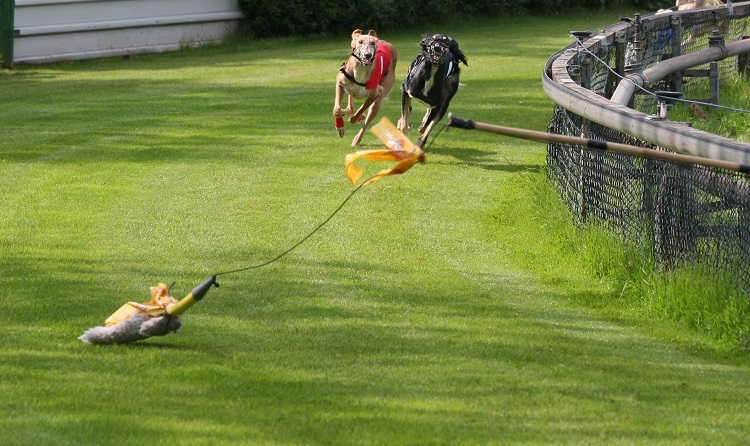
The best way to end dog racing is to encourage friends or family who actively bet on Greyhound racing to stop. Another is to put pressure on local government representatives.
To ban Greyhound Racing, advocates must work with governments to introduce laws that abolish Greyhound racing in all countries.
Efforts must also protect the welfare of the remaining or retired dogs by making racing dog owners contribute to rehousing and fostering costs. This should help Greyhounds bred for sport.
What Was Florida’s Amendment 13?
Amendment 13 is cause for celebration. Backed by the Humane Society, Grey2K USA Worldwide, Doris Day Animal League, and many supporting animal organizations voted to end dog racing in Florida. Dog racing officially became illegal on January 1, 2021, when the last Florida track closed.
In a massive effort to find suitable and loving homes, 4000 dogs found their forever homes. The Humane Society generously helped fund the cause to find permanent adoptive homes and pay for Greyhound injuries and veterinary care
Organizations Helping Greyhounds
Change seldom happens with one person; however, one person can drive change. Greyhounds have many advocates in their corner to end Greyhound cruelty and live dog racing.
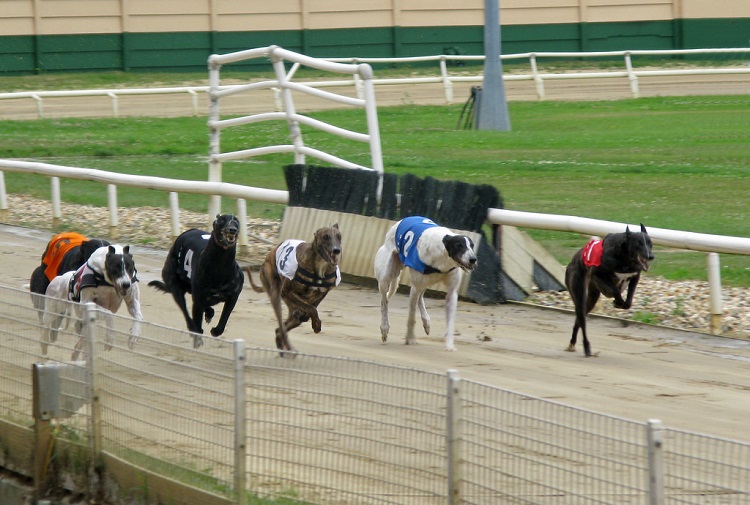
The Humane Society and the ASPCA are two brands that work tirelessly to help save and protect racing Greyhounds.
- Grey2K USA Worldwide is the global voice for Greyhounds and the largest protection organization for racing K9s.
- USA Defenders of Greyhounds is on a mission to rescue every Greyhound bred for racing. They are non-profit and independent of any racing-related industry.
- Friends of Retired Greyhounds is a volunteer, non-profit organization that places and educates future adoptive Greyhound owners about the breed.
- National Greyhound Adoption Program promotes education for prospective Greyhound parents and ensures all former Greyhound racers find homes with loving humans.
- There are many adoption groups that help fund veterinary care and help heal Greyhound injuries.
These rescue organizations are doing their best to end these standard practices of animal cruelty and closing active tracks and live baiting.
Conclusion
You can make a difference in the lives of racing Greyhounds. While not everyone has the opportunity to provide a loving home for a rescue dog, you can help win against Greyhound cruelty. The organizations listed above can use your support financially or by donating time.
We wish the remaining Greyhound racing tracks continued failure and losing money. Also, when bettors wager remotely, they finally learn they’re supporting Greyhound injuries, broken legs, and broken backs.
You can also sign the Grey2K USA petition to join a united front against Greyhound racing. It’s important that we talk about the tragedy of Greyhound racing and abuse, but also end it together.
Let us know if you have ideas or suggestions on how anyone can help end Greyhound racing.


